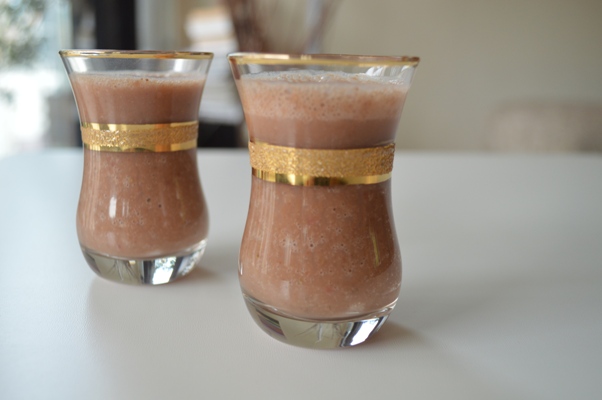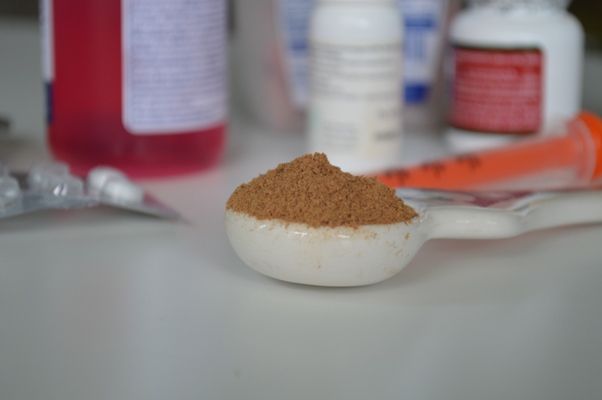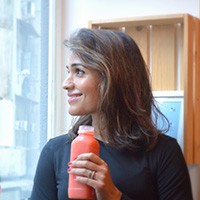
Cinnamon has been part of human history since 2800 BC when it first appeared in Chinese medical writings.
Used for digestive, respiratory and bacterial ailments, our ancestors recognized the magic of cinnamon very early on. Sure enough, modern science is catching up with ancient wisdom to unearth the true power and potency of what some consider a miracle spice.
Cinnamaldehyde is the main volatile oil in cinnamon bark and is responsible for most of its medicinal properties. True cinnamon or Ceylon cinnamon comes from the small Cinnamomum verum tree native to Sri Lanka. Most of the cinnamon available in the West, however, is of the Cassia variety, grown in Indonesia, China and other countries.
If embracing cinnamon abundantly, the kind you use matters. Cassia varieties have measurable amounts of a natural blood thinner, coumarin, which can be toxic to the liver in large quantities. Ceylon cinnamon has negligible amounts of coumarin so it is definitely worth going the extra mile to procure it (via health food stores or Amazon, for example).
Modern scientific evidence supports the following health benefits of cinnamon:
Anti-Diabetes
Studies on type II diabetics have shown that even less than 1/2 a teaspoon of cinnamon a day for 4 months can lower blood glucose levels (1). Cinnamon appears to improve the function of insulin, a hormone that coaxes our cells to soak up blood sugar and use it for energy (2). Rice pudding flavored with cinnamon spiked blood sugar less than bland rice pudding (and probably tasted loads better, too)! (3)
Anti-Microbial
Our ancestors used cinnamon to prevent food spoilage—and for good reason. Cinnamon can kill bacteria, viruses and even some drug-resistant fungi (4). It can disrupt particularly stubborn bacterial colonies called biofilms that coat the surface of medical devices and wreak havoc with hospital-acquired infections. To be an effective medicinal antibiotic, cinnamaldehyde would have to be improved substantially, which is no small pharmaceutical feat. Nonetheless, one can feel good about adding cinnamon to a dish to keep it from spoiling too quickly!
Anti-Inflammatory
Inflammation is pivotal for our body’s defense against invaders, but high levels of unwanted inflammation can lead to chronic diseases like cancer and Alzheimer’s (5). Cinnamon is an anti-inflammatory spice—it blocks inflammatory molecules like arachidonic acid and TNF-alpha (6), keeping unnecessary inflammation in check and inflammation-related diseases at bay.
Cardioprotective
Cinnamon has been shown to lower bad (LDL) cholesterol while sparing good (HDL) cholesterol (7). Cinnamon can also reduce blood pressure (8) and triglyceride levels (9), suggesting it may benefit heart health.
Cognition Boosting
Studies conducted with animals have shown that cinnamon improves memory and learning and reduces oxidative stress in the brain (10). Cinnamon may also protect dopaminergic neurons in Parkinson’s disease (11). A small study with humans demonstrated that the mere scent of cinnamon improved cognitive function (12).
Anti-Cancer
Cinnamon slowed tumor growth in several animal models although human studies have not been conducted yet. The spice inhibits a molecule called NF-kappa B that turns on many cancer-causing genes (13). It can also block the function of proteins that allow cancers to access our blood supply and spread throughout the body (14).
Regulating Female Hormonal Cycle
In a provocative albeit small-scale study conducted by researchers at Columbia University in New York, cinnamon improved menstrual regularity in women with polycystic ovarian syndrome (PCOS) (15). Larger trials are necessary but the findings are intriguing given the link between insulin resistance and PCOS and cinnamon’s positive effects on insulin function.
Unsurprisingly, nature’s pantry and pharmacy merge once again. To inspire you to incorporate this magical spice on your family tables, here is a delicious, nourishing and simple cinnamon-infused way to start your day.

Cinnamon Chocolate Smoothie
{For Toddler, Kid, Adult}
Yields 2 child-sized servings, 1 adult.
Ingredients:
3/4 cup almond milk
1 frozen banana
1 date
1 teaspoon raw cacao powder (regular is fine but you really do miss out on major health benefits when it isn’t raw)
1/4 cup chopped strawberries
1/2 teaspoon ground Ceylon cinnamon (1/4 teaspoon if using the widely available Cassia variety)
Method:
Blend ingredients in blender until smooth.
Enjoy for a burst of luxurious, delicious nourishment to start your day, or even as a mid-afternoon snack.
~
References:
1. Cinnamon use in type 2 diabetes: an updated systematic review and meta-analysis. Allen RW1, Schwartzman E, Baker WL, Coleman CI, Phung OJ. Ann Fam Med. 2013 Sep-Oct;11(5):452-9
2. Cinnamic acid exerts anti-diabetic activity by improving glucose tolerance in vivo and by stimulating insulin secretion in vitro. Hafizur RM1, Hameed A2, Shukrana M3, Raza SA2, Chishti S2, Kabir N4, Siddiqui RA2. Phytomedicine. 2015 Feb 15;22(2):297-300
3. Effect of cinnamon on postprandial blood glucose, gastric emptying, and satiety in healthy subjects. Hlebowicz J1, Darwiche G, Björgell O, Almér LO. Am J Clin Nutr. 2007 Jun;85(6):1552-6
4. Cinnamon: Mystic powers of a minute ingredient. Kawatra P1, Rajagopalan R1. Pharmacognosy Res. 2015 Jun;7(Suppl 1):S1-6
5. Anti-Inflammatory Therapy in Chronic Disease: Challenges and Opportunities
Ira Tabas, Christopher K. Glass. Science 11 January 2013: Vol. 339 no. 6116 pp. 166-172
6. Anti-inflammatory activity of cinnamon (C. zeylanicum and C. cassia) extracts – identification of E-cinnamaldehyde and o-methoxy cinnamaldehyde as the most potent bioactive compounds. Gunawardena D1, Karunaweera N, Lee S, van Der Kooy F, Harman DG, Raju R, Bennett L, Gyengesi E, Sucher NJ, Münch G. Food Funct. 2015 Mar;6(3):910-9
7. Cinnamon Improves Glucose and Lipids of People With Type 2 Diabetes
Alam Khan, MS, Mahpara Safdar, Mohammad Muzaffar Ali Khan, Khan Nawaz Khattak, and Richard A. Anderson. Diabetes Care December 2003 vol. 26 no. 12 3215-3218
8. Effect of short-term administration of cinnamon on blood pressure in patients with prediabetes and type 2 diabetes. Akilen R1, Pimlott Z, Tsiami A, Robinson N. Nutrition. 2013 Oct;29(10):1192-6
9. Cinnamon improves glucose and lipids of people with type 2 diabetes.
Khan A1, Safdar M, Ali Khan MM, Khattak KN, Anderson RA. Diabetes Care. 2003 Dec;26(12):3215-8
10. Effect of Cinnamomum zeylanicum extract on scopolamine-induced cognitive impairment and oxidative stress in rats. Jain S, Sangma T, Shukla SK, Mediratta PK. Nutr Neurosci. 2015 Jul;18(5):210-6
11. Cinnamon treatment upregulates neuroprotective proteins Parkin and DJ-1 and protects dopaminergic neurons in a mouse model of Parkinson’s disease. Khasnavis S1, Pahan K. J Neuroimmune Pharmacol. 2014 Sep;9(4):569-81
12. Cinnamon extract induces tumor cell death through inhibition of NFkappaB and AP1. Kwon HK1, Hwang JS, So JS, Lee CG, Sahoo A, Ryu JH, Jeon WK, Ko BS, Im CR, Lee SH, Park ZY, Im SH. BMC Cancer. 2010 Jul 24;10:392
13. Cinnamon extract inhibits angiogenesis in zebrafish and human endothelial cells by suppressing VEGFR1, VEGFR2, and PKC-mediated MAP kinase.
Bansode RR, Leung T, Randolph P, Williams LL, Ahmedna M. Food Sci Nutr. 2013 Jan;1(1):74-82
14. Preliminary evidence that cinnamon improves menstrual cyclicity in women with polycystic ovary syndrome: a randomized controlled trial.
Kort DH, Lobo RA. Am J Obstet Gynecol. 2014 Nov;211(5):487.e1-6
~
Relephant Recipes:
Roasted Carrots with Sunflower Seeds & Cinnamon. {Recipe}
Decadent Lasagna with Sweet Potatoes & Spinach. {Vegan Recipe}
~
Author: Kanchan Koya
Editor: Alli Sarazen
Photos: Author’s Own











Read 1 comment and reply